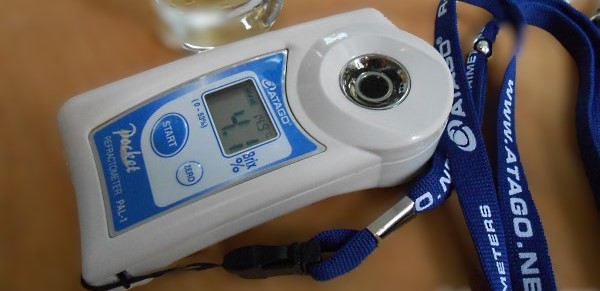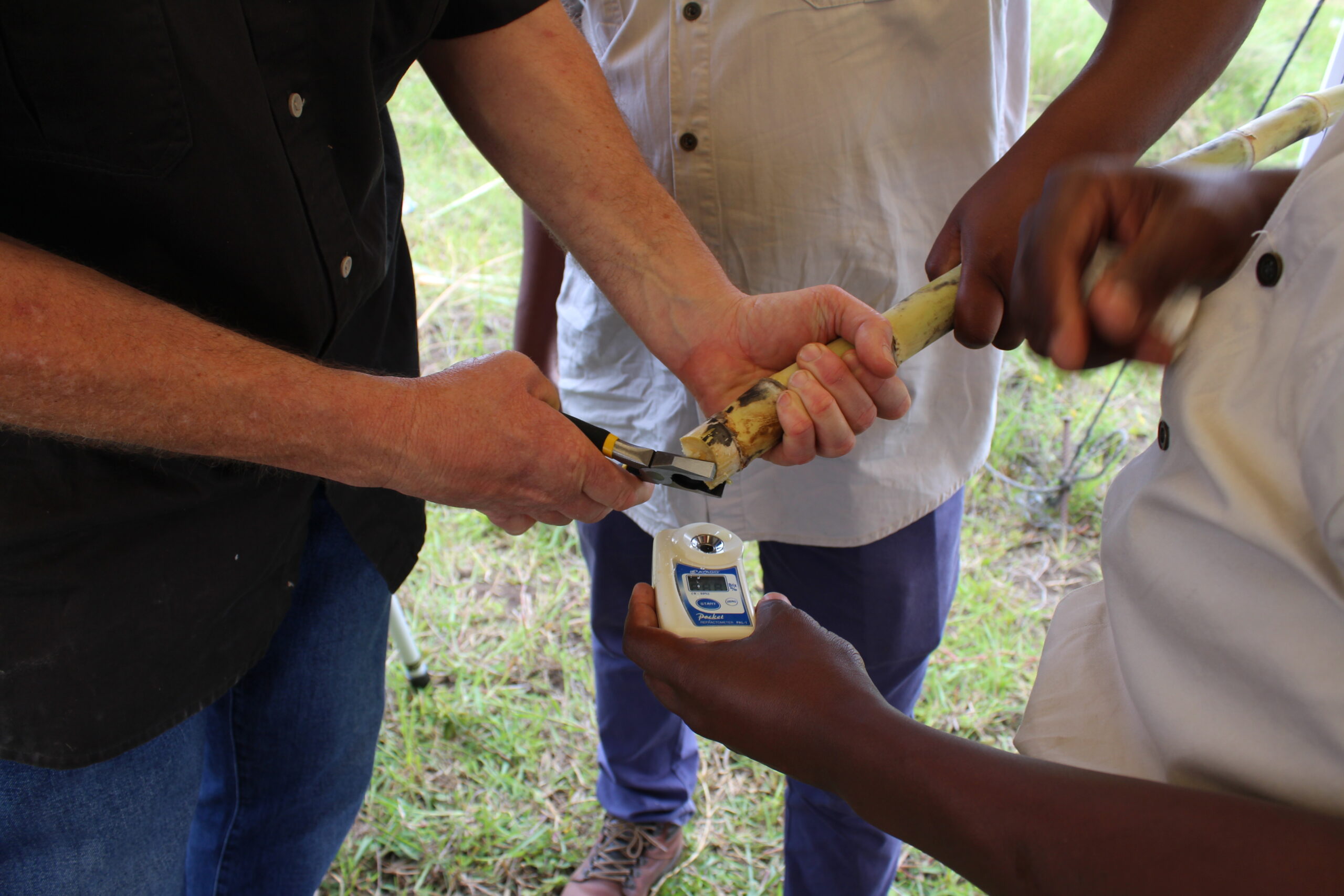Research at SASRI during 2013 – 2016 enabled on-farm assessments of cane quality for purposes of chemical ripening decision-making and harvest scheduling. The method makes use of a portable refractometer in combination with the SASRI smartphone application PurEst®. The assessment protocol, interpretation of assessment output, and boundaries for using the method, are explained in SASRI Information Sheet 4.7.
Since introducing the method to industry, a few frequently asked questions (FAQs) have arisen from growers. In this article we answer these FAQs.

Why are the Brix values measured with a refractometer different from the Brix values measured by the cane testing service (CTS) at the mill?
Using juice squeezed from sugarcane stalks, a refractometer measures the dissolved sugar (Brix) concentration by mass in the juice. To the contrary, when determined through direct analysis of cane (DAC) by CTS at the mill, the reported values are Brix % cane. For example, a refractometer Brix reading of 15% implies that there are 15 grams of Brix dissolved per 100 mL of sugarcane juice, while a Brix % cane value of 15% implies that 15% of the cane sample weight consists of Brix. In addition, the fibre content of the cane sample is also used in the calculation of Brix % cane, which is not the case with refractometer measurements. Hence, Brix values measured with a refractometer on the farm cannot be directly compared with the values reported by CTS.
Can a refractometer be used to track the progression of cane quality deterioration?
No. A refractometer measures Brix in sugarcane juice but cannot determine the actual composition (sucrose versus non-sucrose). During cane quality deterioration triggered by natural events (e.g. hailstorms, frosts and overly aged cane), or following burning and harvest, there is an unavoidable breakdown of sucrose to non-sucrose (see SASRI Information Sheet 4.5). Because a refractometer cannot detect this breakdown process it might still give a high Brix reading despite considerable quality deterioration. Using refractometers to track cane quality deterioration can thus easily lead to misinterpretation.
What type of refractometer should I purchase and does SASRI supply them?
SASRI is not in the business of selling analytical instruments, but there are several reputable commercial companies that supply portable refractometers online. Portable refractometers come in either manual or digital models. Both models are good for on-farm use although some training is required to take accurate measurements with the eye using the manual model. Of greater importance is that the refractometer should feature automatic temperature compensation and a Brix measuring range of between 0 to at least 30%.
Why are the RV% estimates provided by PurEst® often higher than the actual RV% values obtained from the mill at harvest?
It is very common for the RV% estimates obtained with PurEst® on-farm testing to be higher than the actual RV% values for cane consignments delivered to the mill. The reason for this difference is easy to explain: the PurEst® on-farm method estimates quality parameters in living unburned stalks, stripped of all leaf material and topped at the natural breaking point. These estimates exclude the loss in cane quality because of burning, variable topping height, presence of leaf residue, stalk desiccation, presence of extraneous matter (e.g. soil) and burn to crush delays that occur during commercial harvesting. In essence, the PurEst® on-farm test values represent the best-case scenario cane quality of a field before harvesting begins. On-farm testing with PurEst® cannot replace the accredited laboratory testing of cane deliveries at the mill.
What value will I get from using a refractometer and PurEst® on the farm?
Irrespective of location (South Africa or international), or variety (SASRI or other), cane maturity can be assessed on the farm with a refractometer, because the Brix-gradient phenomenon is universal in all sugarcane. Refractometers and PurEst® take the guessing out of chemical ripening decision-making through quantitative estimates of whole-stalk juice purity with associated ripening recommendations.
Due to the volatile nature of cane maturity driven by climate, the need for chemical ripening varies during the season and between seasons. Informed ripening decision-making contributes to the judicious use of agrochemicals. Wasteful expenditure on chemical ripening in fields that have already matured due to natural ripening can be avoided. Chemical ripening of very mature crops, that may result in adverse effects on cane quality due to excessive crop stress, can also be safeguarded against. A refractometer alone can also be used to track the speed of the chemical ripening process after spraying thus ensuring the best return on investment.
Although the RV% estimates provided by PurEst® are often higher than those provided by the mill at harvest (because of the reasons explained in the answer to question 4), these RV% estimates are very useful for harvest scheduling purposes because relative maturity rankings between fields can be established.

